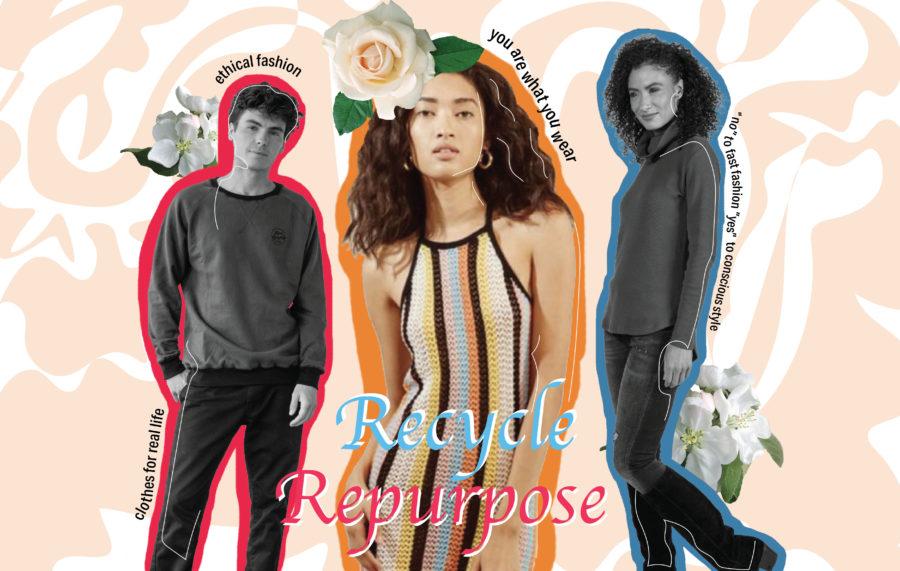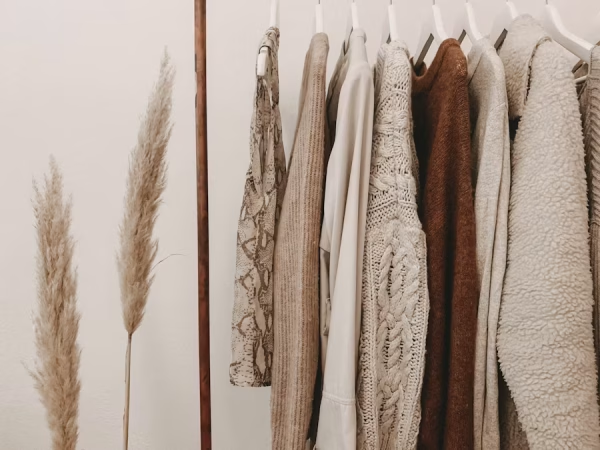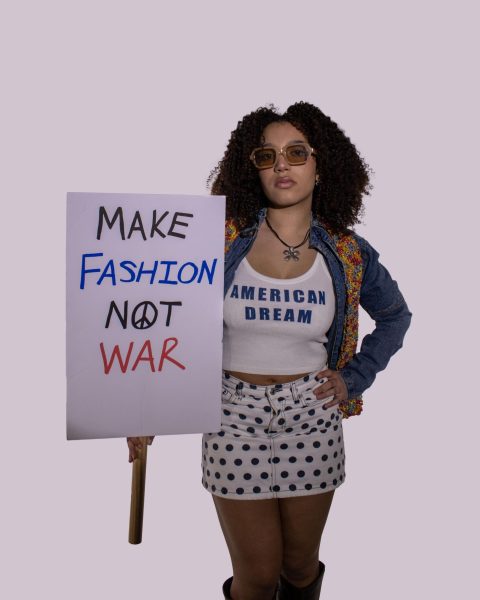5 tips for creating an eco-friendly wardrobe
It is no secret that our clothing consumption has a negative impact on the environment. According to The True Cost, each U.S. citizen creates, on average, 82 pounds of textile waste from production and disposal of clothing every year. This equates to nearly 11 million tons of textile waste from the United States as a whole.
In order to cut down on this waste, it is important to learn to be more conscious of the effects the clothing we buy has on the environment and how we can help to improve upon it.
Below are five tips to start creating a more sustainable wardrobe.
1. Buy clothes made from eco-friendly fibers
Before you take a product to the cash register, look at the fabric label to see what it’s made of.
A large majority of clothing is made of synthetic fibers like polyester, nylon and acrylic. These man-made fibers are used so often because they are much cheaper to produce than natural fibers like cotton and silk.
However, according to Respecterre, a clothing company dedicated to sustainability, these fibers are often made from petroleum, meaning they depend on fossil fuels to be produced. Moreover, according to Superego, a lifestyle brand promoting sustainability, these synthetic fibers take a long time to decompose and release microfibers into waterways, which harms marine life.
Also, surprisingly, conventional cotton can be harmful to the environment as well. This is because farmers growing cotton use pesticides to keep insects away and production is very water-intensive. In fact, according to the California Cotton Ginners and Growers Association, one cotton T-shirt needs around 257 gallons of water to be produced.
These fibers are used so often that they are difficult to avoid purchasing. However, when shopping, keep an eye out for alternatives to these synthetic fibers and conventional cotton.
An alternative to synthetic fibers is Econyl. According to Aquafil, the manufacturer of Econyl, the fiber is a recycled synthetic made from nylon waste that is recyclable and can be reused by manufacturers.
For example, in an attempt to become more sustainable, Burberry created a collection in August containing coats and bags made with Econyl.
An alternative to conventional cotton is organic cotton. According to About Organic Cotton, organic cotton doesn’t use toxic chemicals in production and uses 88 percent less water than conventional cotton.
For example, Patagonia offers an “organic cotton clothing” section on their website.
2. Educate yourself on brands before you buy
Before you buy from a brand, go to their website and read their corporate social responsibility statement.
According to the United Nations Industrial Development Organization, a specialized agency promoting industrial development for environmental sustainability, this statement explains how a company includes social and environmental concerns in their business operations. Take a look at it and then decide if the company is one you want to support.
A great tool to use when deciding whether to buy from a particular company is Good on You. This site rates companies based on how ethical they are and also gives alternatives to those companies rated as unethical.
3. Buy for longevity
Before you buy an item, ask yourself if it will have a shelf life in your wardrobe.
The Age and Active Life of Clothing study showed that every fifth garment in one’s wardrobe was either never used or only used a few times. This may trigger a need for replacement of clothes not worn, which in turn increases clothing’s environmental impact.
To test to see if you will wear an item, try the 30 wears challenge. The challenge was started by Olivia Firth, the creative director of EcoAge, a company that helps brands add sustainability to their brand strategies. According to The Sustainable Edit, the 30 wears challenge encourages people to ask themselves if they will wear an item at least 30 times before wishing to discard it.
Firth told the Telegraph, “The biggest message is every time you buy something, always think, ‘Will I wear it a minimum of 30 times?’ If the answer is yes, then buy it. But you’d be surprised how many times you say no. That should tell you something about how the current model in fashion is unsustainable – and needs urgent change.”
4. Restyle pieces you already own
The fun thing about fashion is that it allows for creativity.
Try thinking outside of the box when it comes to how to wear items you already own. Mix feminine dresses and skirts with masculine flannels or jackets. Ask your friends for tips and advice. Look to magazines, Pinterest and Instagram for new ways to wear your garments you already own.
There are infinite possibilities. Become a trendsetter!
If you are looking for new ways to style your favorite T-shirt, check out Glamour’s “How to Dress Up Your Favorite Graphic T-shirts.”
5. Buy Vintage
Next time you want to go shopping, consider shopping secondhand.
According to Planet Aid, an organization that collects and recycles clothes and shoes, purchasing clothing secondhand reduces the need to manufacture a new item, which in turn saves resources.
Check out your local thrift store, Goodwill, or a local garage sale. There are even ecommerce secondhand companies that ship items to your front door like ThredUp and TheRealReal.
The way we are consuming our clothing is negatively affecting the environment. However, by being more mindful of how we consume clothing and more knowledgeable of what is harmful, we can work to slow this affect. The next time you go shopping, I hope you pull up this article for reference 😉







